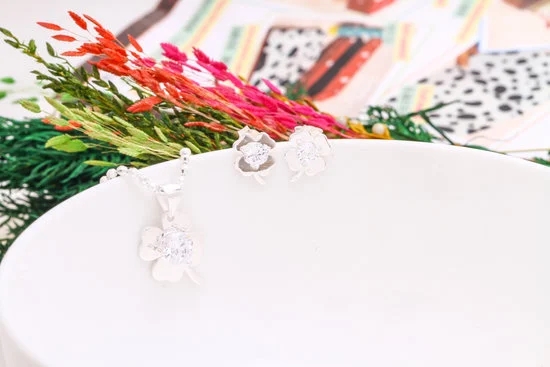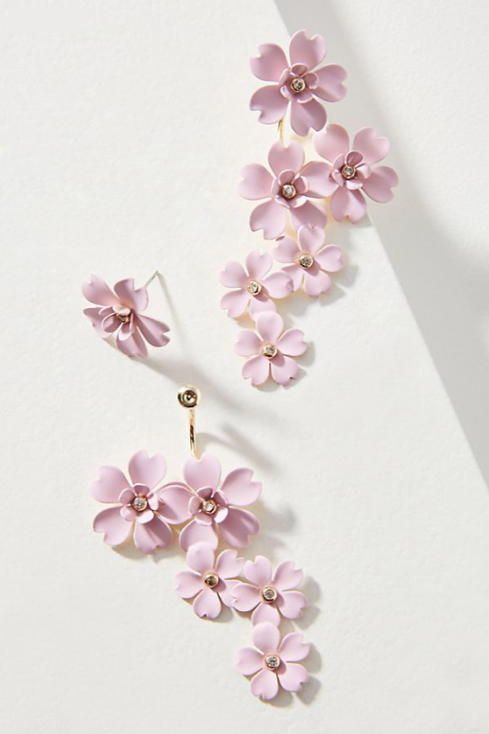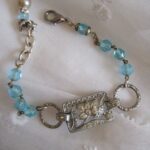Are you looking to learn how to bead jewelry with tiny beads? Delving into the world of tiny bead jewelry can be a fascinating and rewarding experience. From choosing the right beads to mastering essential techniques and adding finishing touches, creating unique and eye-catching jewelry pieces can be both challenging and satisfying. In this article, we will explore the exciting world of tiny bead jewelry making, providing you with essential tips, techniques, and design inspiration.
When it comes to tiny bead jewelry making, choosing the right beads is crucial. Understanding the different types and sizes available in the market will allow you to create stunning designs that stand out. Alongside this, having the right tools and materials such as needles and threads is essential to bring your creative ideas to life.
As we navigate through this introduction, we will cover basic techniques for mastering the art of beading and provide you with design inspiration that will have you creating one-of-a-kind jewelry pieces in no time. Additionally, we will share valuable tips and tricks for working with tiny beads, offering guidance on how to overcome challenges that may arise during the creation process.
So let’s dive into the world of tiny bead jewelry making and explore all that it has to offer.
Choosing the Right Beads
When it comes to creating beautiful jewelry with tiny beads, choosing the right beads is crucial in achieving the desired look and style. Understanding the different types and sizes of beads available will help you create stunning and unique designs that stand out. From seed beads to crystal beads, there is a wide variety of options to choose from, each offering its own special characteristics.
Seed beads are one of the most popular choices for creating jewelry with tiny beads. These small, uniformly shaped beads come in different sizes, with the smallest being 15/0 and the largest being 3/0. They can be made from various materials such as glass, metal, or plastic, giving you plenty of options to play with when designing your jewelry pieces.
Crystal beads are another fantastic option for adding sparkle and elegance to your jewelry designs. Available in a range of shapes and sizes, crystal beads come in various finishes and colors, allowing you to create glamorous and eye-catching pieces. Whether you’re looking for round crystal beads or bicone-shaped ones, these beads add a touch of sophistication to any design.
In addition to seed beads and crystal beads, there are also other types of tiny beads such as bugle beads, delica beads, and magatama beads that can add texture and dimension to your jewelry creations. Understanding the unique qualities of each bead type will help you make informed decisions when selecting the perfect beads for your projects.
| Bead Type | Description |
|---|---|
| Seed Beads | Small, uniformly shaped beads available in different sizes and materials such as glass, metal, or plastic. |
| Crystal Beads | Available in a variety of shapes, sizes, finishes, and colors to add sparkle and elegance to jewelry designs. |
| Bugle Beads | Long cylindrical tube-shaped beads that can add texture and length to jewelry pieces. |
Essential Tools and Materials
When it comes to creating stunning jewelry with tiny beads, having the right tools and materials is essential. From needles to threads, each component plays a crucial role in bringing your designs to life. Here’s a rundown of the must-have items you’ll need to get started on your beading journey:
- Beading Needles: Using the right needle can make all the difference when working with tiny beads. Look for thin, flexible needles that can easily pass through small bead holes without causing damage.
- Beading Thread or Wire: Selecting the appropriate thread or wire is vital for ensuring the durability and longevity of your jewelry pieces. Nylon thread and stainless steel wire are popular choices for beadwork.
- Scissors: A good pair of sharp, fine-tipped scissors is necessary for precision cutting of threads and wires during the jewelry-making process.
- Bead Mat: A soft, velvety surface to work on will keep your tiny beads from rolling away as you work. Bead mats provide a non-slip surface and help prevent beads from spilling onto the floor.
In addition to these basic tools, having a well-organized workspace with containers for sorting and storing your beads can also greatly improve efficiency as you work on various projects. By investing in high-quality tools and materials, you can ensure a more enjoyable and successful experience when creating intricate beaded jewelry.
Reminder
Don’t forget to consider the types of beads you’ll be using before starting your project. Larger holed beads often require thicker threads or wires while smaller seed beads work best with finer threads. It’s important to match your tools and materials according to the size and type of beads you plan to use in order to achieve the best results.
Basic Techniques
When it comes to beading jewelry with tiny beads, mastering the basic techniques is crucial for creating beautiful and durable pieces. Whether you are a beginner or an experienced beader, understanding and practicing these fundamental skills will allow you to create stunning jewelry that you can be proud of.
Stringing
Stringing is one of the most basic techniques in beading jewelry with tiny beads. It involves threading beads onto a stringing material, such as beading wire, thread, or cord.
To master this technique, it’s important to learn how to properly secure the ends of your stringing material and to pay attention to the spacing and pattern of your beads. Practice different stringing methods, such as using crimps or knots to secure your beads, to find the best approach for your designs.
Stitching
Stitching techniques, such as peyote stitch or brick stitch, are commonly used in beadwork to create intricate patterns and designs with tiny beads. Learning these techniques may seem daunting at first, but with practice and patience, you can become proficient in creating beautiful bead woven jewelry. Understanding the different types of stitches and their variations will open up a world of design possibilities for your projects.
Wire Wrapping
Wire wrapping is another essential skill in beading jewelry with tiny beads, especially when incorporating gemstones or accent beads into your designs. By mastering this technique, you can add dimension and texture to your pieces while securely attaching beads and components. Practice making simple wire loops, wrapped loops, and other wire-wrapping techniques to elevate your beadwork to the next level.
By honing these basic techniques and continuously expanding your knowledge through practice and experimentation, you can take your beading skills to new heights and create truly remarkable jewelry pieces using tiny beads. Whether you prefer simple stringing methods or intricate bead weaving techniques, mastering the art of beading opens up a world of creativity and self-expression that is both fulfilling and rewarding.
Design Inspiration
When it comes to creating jewelry with tiny beads, the design possibilities are endless. Whether you’re a beginner or an experienced beader, finding inspiration for your next project is crucial in making your pieces stand out. One great source of inspiration is nature.
Take a walk outside and observe the colors, textures, and patterns around you. You can then incorporate these elements into your designs, using a variety of tiny beads to create stunning pieces that reflect the beauty of the natural world.
Another way to find design inspiration for your beaded jewelry is by exploring different cultures and their traditional beadwork. From Native American beadwork to African tribal jewelry, each culture has its own unique style and techniques when it comes to beading. Take the time to research and learn about different beadwork traditions, and use this knowledge to infuse authenticity and cultural significance into your own creations.
Furthermore, turning to fashion and current trends can also spark creativity in designing beaded jewelry with tiny beads. Keep an eye on the latest fashion runway shows, red carpet events, or even social media influencers for ideas on color schemes, styles, and statement pieces that can inspire your next beading project. Additionally, experimenting with different bead shapes, finishes, and textures can add a modern twist to classic designs.
Incorporating various design sources such as nature, culture, and fashion into your beaded jewelry projects will not only result in unique pieces but also showcase your personal style as a jewelry maker. The possibilities are truly endless when it comes to creating one-of-a-kind jewelry with tiny beads.
| Design Inspiration Ideas | Description |
|---|---|
| Nature | Use colors, textures, and patterns from nature as inspiration for designs |
| Cultural Traditions | Explore different cultures’ beadwork traditions for unique ideas |
| Fashion Trends | Stay updated on fashion trends for modern design inspirations |
Tips and Tricks for Working With Tiny Beads
Working with tiny beads can be both rewarding and challenging. While these beads can add intricate detail and beauty to your jewelry pieces, they also require patience and precision. Here are some tips and tricks to help you overcome the challenges of working with tiny beads:
- Use a proper workspace: Set up a well-lit area with a clean, flat surface to work on. This will help you see the tiny beads clearly and prevent them from rolling away.
- Invest in quality tools: Using the right tools, such as small beading needles, fine thread or wire, and a magnifying glass if needed, can make a significant difference in your beading experience.
- Organize your beads: Keep your tiny beads organized in containers or bead storage boxes with compartments. This will save you time and frustration when searching for specific beads while working on your jewelry project.
It’s also important to take breaks when working with tiny beads to avoid eye strain and hand fatigue. Give yourself plenty of time to practice and improve your skills. Don’t get discouraged if it takes time to master the art of working with tiny beads – like any craft, practice makes perfect.
Remember that mistakes are part of the learning process, so don’t be afraid to experiment and try new techniques. With patience and perseverance, you’ll soon find yourself creating stunning jewelry pieces with these delicate little treasures.
Finishing Touches
Adding the right finishing touches to your beaded jewelry can truly elevate the piece and give it a professional and polished look. From adding clasps to closures and embellishments, this section will provide you with essential tips and guidelines for completing your beautiful creations.
Choosing the Right Clasps
When it comes to adding clasps to your beaded jewelry, it’s important to consider both functionality and aesthetic appeal. There are various types of clasps available, including lobster clasps, toggle clasps, magnetic clasps, and more. Consider the style of your jewelry piece and its intended use when choosing the right clasp. For delicate necklaces or bracelets made with tiny beads, a small magnetic clasp might be more suitable, while a larger toggle clasp could work well for chunkier designs.
Embellishing Your Jewelry
Embellishments can add an extra touch of charm to your beaded jewelry pieces. From adding small charms or pendants to incorporating gemstone beads or metal spacers, there are endless options for embellishing your creations. When working with tiny beads, opt for smaller embellishments that complement the overall design without overpowering it. Experiment with different textures and materials to find the perfect embellishments that enhance the beauty of your handmade jewelry.
Adding Closures
In addition to choosing the right clasp, considering closures is also important when creating beaded jewelry. Whether you use jump rings, crimp beads, or bead tips, ensuring that your closures are secure is vital in preventing breakage and loss of your jewelry pieces. Take time to properly attach closures using the appropriate techniques such as crimping or knotting to ensure that your finished jewelry is not only beautiful but also durable.
By paying attention to these finishing touches and taking care in selecting high-quality components, you can ensure that your handmade beaded jewelry pieces are not only visually stunning but also durable and long-lasting.
Caring for Your Beaded Jewelry
Once you have invested time and creativity into creating your beautiful beaded jewelry pieces, it is important to take good care of them to ensure their longevity. Proper maintenance and storage are essential in preserving the beauty and quality of your handmade jewelry.
To maintain the sparkle and luster of your beaded jewelry, it is important to handle them with care. Avoid exposing them to harsh chemicals such as perfumes, lotions, and hairsprays as they can cause damage to the beads and metals. Additionally, make sure to remove your beaded jewelry before engaging in activities that may cause excessive sweating or exposure to moisture.
When it comes to storing your beaded jewelry, it is best to keep them in a dry and cool environment. To prevent tangling and scratching, consider using individual pouches or compartments for each piece of jewelry. For necklaces and bracelets, hanging organizers with individual hooks are also a great way to prevent tangling while maximizing space.
Proper maintenance and storage practices will not only preserve the beauty of your beaded jewelry but also extend their lifespan. By following these tips, you can continue enjoying your handcrafted creations for years to come.
Conclusion
In conclusion, learning how to bead jewelry with tiny beads opens up a world of creativity and self-expression. By understanding the different types and sizes of beads, mastering basic techniques, and finding design inspiration, you can create unique and eye-catching jewelry pieces that truly reflect your style. While working with tiny beads may present its challenges, there are tips and tricks that can help you overcome them and achieve stunning results.
By embracing the joy of creating beautiful handmade jewelry with tiny beads, you not only get to express your creativity but also explore a fulfilling hobby that allows you to relax and unwind. The satisfaction of completing a stunning beaded piece is unparalleled, making it a rewarding experience for anyone interested in jewelry making. Whether you’re a beginner or an experienced beader, there is always more to learn and explore in the fascinating world of tiny bead jewelry.
As you continue to delve into the art of beading with tiny beads, remember to care for your handmade jewelry by following maintenance and storage tips. This will ensure that your creations last for years to come, allowing you to enjoy and showcase your beautiful handcrafted pieces. With the right tools, materials, techniques, and a touch of creativity, anyone can master the art of beading jewelry with tiny beads and create stunning pieces that reflect their individual style and personality.
Frequently Asked Questions
What Can I Do With Tiny Seed Beads?
Tiny seed beads can be used for a variety of jewelry-making projects such as creating intricate beadwork patterns, making earrings, necklaces, bracelets, and even decorating clothing or accessories. These small beads are also perfect for adding detail and texture to handcrafted items like beaded tapestries or embroidery.
What Is the Best Thread for Tiny Beads?
When working with tiny beads, the best thread to use is one that is strong and flexible such as a nylon beading thread or a monofilament thread. These types of threads are thin enough to fit through the small bead holes multiple times without breaking and provide the durability needed for jewelry pieces that will be worn regularly.
How Do You Sew on Tiny Beads?
Sewing on tiny beads requires patience and precision. First, use a fine beading needle that will fit through the bead’s hole multiple times. Thread the needle with a suitable beading thread and tie a knot at the end.
Then carefully pick up each bead using the needle and thread, ensuring they are lined up correctly before sewing them onto the fabric using small, tight stitches. This process requires attention to detail but yields beautiful results in intricate beadwork projects.

Welcome to my jewelry blog! My name is Sarah and I am the owner of this blog.
I love making jewelry and sharing my creations with others.
So whether you’re someone who loves wearing jewelry yourself or simply enjoys learning about it, be sure to check out my blog for insightful posts on everything related to this exciting topic!





